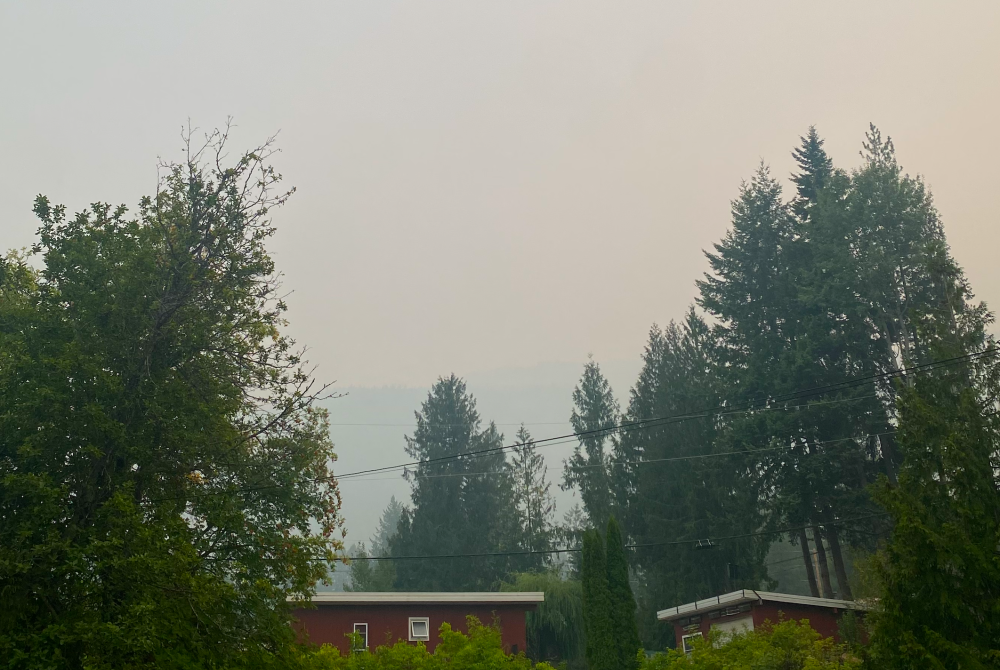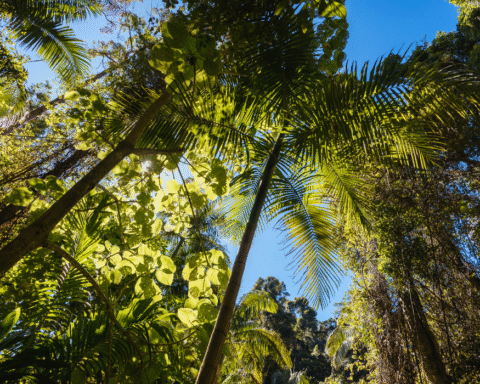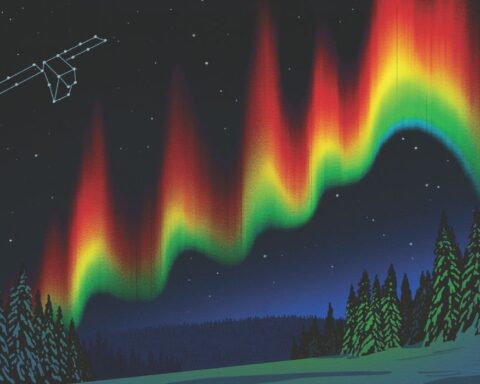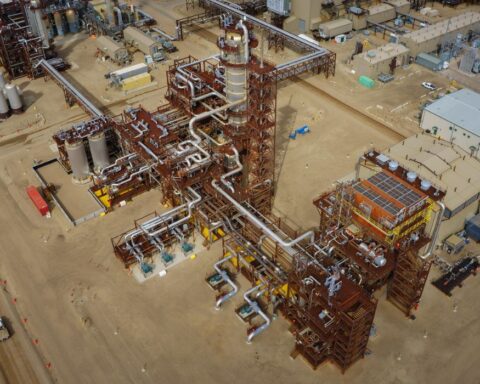The idea for this story first struck me on the brightest of blue-sky days in my hometown of Nelson, on a Friday morning less than three days after the McDougall Creek fire began on August 15 near West Kelowna, a community of 35,000 people, located west of the larger Kelowna city.
Blue sky summer days are common in Nelson, a town of 11,000 perched on the shores of Kootenay Lake, all around which rise forested slopes, some still untouched by logging. They culminate in succeeding waves of high mountains, named for Norse gods, Scottish administrators, amphibians (see Frog Peak and Mt. Toad), and more than one optimistic miner.
What made that blue-sky Friday morning striking was that it arrived as a reprieve, a blessing after two days of dense smoke. Winds being what they were that week, the smoke from McDougall had snaked east, racing across mountain tops, tracking valley floors, and smothering communities like Nelson hundreds of kilometres away, within hours.
And that morning was doubly-blessed because the two days of preceding smoke—thick and acrid—had felt like the down-chop across the neck that locals had been anticipating for weeks.
After a dry spring and weeks without a drop of summer rain, my tinder-dry hometown and the forests that surround it were parched. If fire itself did not arrive, residents knew smoke surely would. And it did.
The first wisps arrived early on August 16, and by noon, forested slopes 500 metres away had vanished behind a grey and acrid wall of smoke.
That Nelson woke to a blue-sky that Friday owed only to a shift in the winds—the McDougall Creek fire was still raging, as those who were cautiously watching would know.
I certainly knew it as a writer for The Energy Mix. But I also knew it as someone born and raised in Nelson and the surrounding valleys; someone who has been incredibly lucky enough to be able to return every summer to one of the most beautiful places on Earth; someone who knows, by profession and direct exposure, just how fragile such beauty has become.
I have been, and remain, one of the lucky ones. I knew the childhood experience of diving into lake water so blue-green and clear that anyone inclined to believe in Paradise might think it had returned.
As a child, I hiked up through the lichen-draped, moss floored forests, past roaring creeks, and into a soaring sub-alpine world of rocks and grizzly bears. I knew early on what the sublime felt like, that combination of beauty (the sky, the wildflowers, the mountains golden at sunrise and sunset) and terror (see above, grizzly bears, plus the fear of falling down a cliff, getting hit on the head by a rock, and so on). I will never forget camping in the high country under the stars, and how much bigger they seemed at 7,000 feet.
And the sky was so clear, so free of smoke.
Writing that last line makes me recall a small, but illustrative, example of the mind-bending ironies of these times. Consulting my phone for weather this morning, I note that it records the day as simultaneously “sunny” and “perfectly clear” (thank you, satellite!), and shrouded in toxic smoke. Air quality index is 8 out of 10, “worse than yesterday at about this time.”
At sunrise on that suddenly blue-sky August 18 morning, I took my bike out on the road, challenging my legs and lungs and heart on the steep mountain roads that stitch the town together. As I rode, I thought about the several ways I might begin this story.
One option was to begin with the idea that “fire is coming for us all,” a phrase I read in Slate shortly after news broke about the incineration of Lāhainā in Maui. For the Slate author, part of the unsettling horror of Lāhainā was that if a place like lush Hawai’i could go up like a candle, nowhere was safe.
But as that author, and I, would quickly discover, the story of Lāhainā’s immolation is anything but a tale of another paradise turning to ashes overnight. That particular “apocalypse” was years in the making.
Any surviving inclination to use “fire is coming for us” as the leaping off point for my Kootenay tale was extinguished in the flood of tens of thousands of people across British Columbia currently forced from their homes by actual flames.
Another option was to begin by talking about “solastalgia.” Coined by Australian environmental philosopher, Glenn Albrecht, solastalgia describes the distress—which can be motivating—of witnessing the defamiliarizing degradation of ecosystems, especially those one knows intimately, either directly or by some kind of association. For instance, born into the West Kootenay inland rainforest ecosystem, I know it at that level. And though I have never been to the Arctic, my love of winter and vast spaces makes my mourning for that ecosystem likewise acute. Asked to explainsolastalgia, Albrecht described it as “the homesickness we feel even whilst at home.”
But as distressed as I become when I think about the fires that have, this year alone, “come for” Lāhainā, Yellowknife, and Kelowna (and Tenerife, Canary Islands, to name just one of dozens of currently fire-stricken communities outside North America), solastalgia was simply not true to what I felt that morning on my bike as the sun rose into a miraculously clear sky.
It wasn’t true to what I had felt when I looked out the window at dawn and said, “Oh my goodness! NO SMOKE!”
All of my distress, my grief, my worry, that had been building over the past 48 hours, had been extinguished by a simple shift in the wind’s direction.
I knew that the fire still burned in Kelowna, and that there was another much smaller one, burning 20 kilometres south, near the town where I was born. And later that day, a patch of forest in the hills directly above Nelson would burst into flames and fill the sky with thick brown smoke.
But on that morning, despite knowing better, my heart was so light, and my mind chose to follow.
Riding back down into the town an hour later, I noticed how many people seemed to be doing the same. Out on the streets, laughing and talking as if they did not have a care in the world.
As if without smoke, there could be no fire.
As if they, like me, did not feel they were living in the shadow of end times.
As if we were not, all of us, living with increasingly broken hearts.
Less than 24 hours later, the smoke rolled back in.

Looking up as I write, I see that the smoke seems slightly lighter than yesterday. There may even be a hint of blue. Yesterday’s London 1950s pea-fog thick smoke was an eye-watering, throat-coating, lung-destroying miasma that blotted out the sun.
Much of the smoke is likely from Kelowna, but there are other fires burning now, to the south and to the east.
It is next-to-impossible to know when the smoke will lift. If the wind changes direction again—and no fires break out to the north—we may get a blue-sky day again. Or the smoke may last into September.
There are many possible endings to the story of Nelson, B.C, my hometown, the town famous for powder skiing, the Steve Martin remake of Cyrano de Bergerac, and the now-steadily shrinking glacier that is the namesake of a local beer.
On bright-blue sky days like the precious one just passed, even I—climate reporter—slip so easily into old habits of mind and body that recall a time before the devastating reality of anthropogenic global heating made itself felt. From when a blue-sky summer day felt like it would last forever, or at least come dependably round again after the equally dependable, and sweet, delights of autumn, winter, and spring.
For those of us who are still lucky enough to witness such tender stability in our days, if not our seasons, the trick is to rejoice and delight in that sweetness—even as we do not forget the acrid taste of smoke that stung our eyes and hurt our lungs.
We cannot forget, because if humanity fails to rein in global heating to below 1.5°C, the still lush rainforest that rises above Nelson will one day transition to grasslands like those aflame in the hills around Kelowna, till one day the entire valley itself will go up in flames.
I am no scientist, but I know enough science to know that this prophecy will come to pass, unless we all learn to live better in a shifting reality—even as we attune to the present, with all its joys and sorrows.
Above all, we must remember that what global heating means is that the absence of smoke will never again mean the absence of fire. Somewhere, living things are burning. And it is our job to help put those fires out.
Should we fail to help, there will one day be no more blue-sky days for anyone. Just endless smoky days like the ones I now experience in Nelson, which at their bleakest, feel like they are moments away from the world’s end.
This story was originally published by The Energy Mix.







